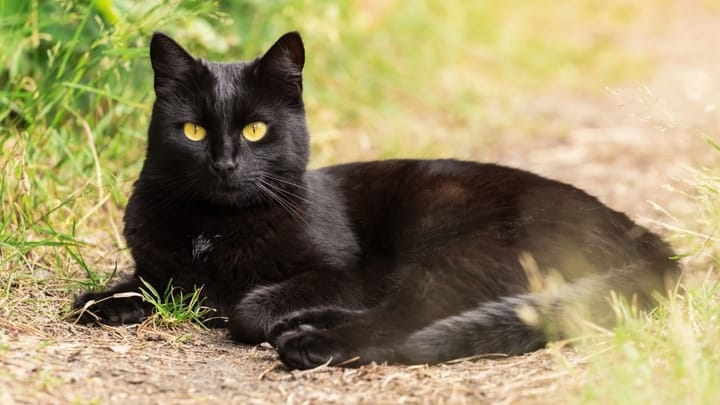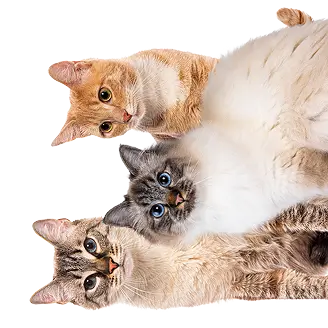Bombay
Other name: Black Burmese


As long as you’re not superstitious, and love Bagheera from The Jungle Book, this cat is for you! The Bombay was bred to look like a mini black panther and you won’t find a single white hair on them. Their black coats, and piercing yellow eyes give them an undeniable charm!
|
Life expectancy |
The Bombay has a life expectancy of between 12 and 15 years |
|
Temperament |
|
|
Adult size |
Female
Approximately 12 in
Male
Approximately 12 in
|
|
Adult weight |
Female
Between 7 and 11 lb
Male
Between 7 and 11 lb
|
|
Coat colour
Completely black. |
Black |
|
Type of coat
Short |
Short |
|
Eye colour
Yellow, copper |
Yellow
Brown
|
|
Purchase price |
The Bombay costs approximately 50£ |
Black cats normally go a tinge of brown if they get too much exposure to the sun. However this is not the case for Bombays. Their coats are totally black. Interestingly, their skin and paws are the same color as their hair.
More details about the Bombay
Bombay: Origins and history
This majestic breed, native to the United States, was born in 1958 because an American breeder wanted to have a mini black panther. Nikki Horner succeeded in creating this breed, by crossbreeding her sable-colored Burmese cat (sand) and a black American Shorthair. And it was only in 1972, after multiple litters, that she was satisfied with her breed. It was recognized in 1979 by TICA. This breed is not particularly widespread In Europe and only about 50 Bombay were registered in 2015.
Physical characteristics of the Bombay
Their bone structure and muscles are reminiscent of the American Burmese. Their athletic bodies are heavier than you would think and their shiny black satin coats contrast beautifully with their yellow eyes, which are set in their rounded heads.
Bombay: Characteristics
Bombay: Behaviour
Breed compatibility Bombay
Bombay: Purchase price
On average, a Bombay costs approximately £50. Their prices can vary based on their pedigree, their lineage, where they’re from, their age and even their sex. However, you will have to be put on a waiting list as there are not many breeders in the UK.
In terms of a monthly budget, it costs around £25 / month to keep them healthy, and to provide them with a good kitty litter and high quality food.
Bombay: Shedding
Light
Their spring moult is so scarce that it shouldn’t even need more regular brushing during this period.
Bombay: Grooming
Just like the Burmese, Black Burmese have almost no undercoat. Weekly brushing is sufficient.
Bombay: Health
On average, they live between 12 and 15 years.
Their short, shiny hair and lack of an undercoat makes them ill-equipped for cold climates. Black Burmese definitely prefer warm weather.
They have a good appetite thanks to their activity levels and body type. Care must be taken to diversify their activities so that they are not tempted to eat due to boredom.
Bombays can develop the same diseases as other cats such as oral diseases. They can also suffer from breed specific illnesses.
Burmese Cranio-facial abnormality or the Burmese Head Defect (BHD) is defined by poor development of the head. Affected kittens have no nose, as well as eye or brain problems. Their survival is then compromised. A genetic screening test exists for this disease.
Hypertrophic cardiomyopathy is the thickening of the heart muscle. This can lead to heart failure due to arrhythmias, pulmonary edema, thrombosis of an artery, etc. Screening is done by means of an echocardiography examination, which is usually renewed annually. Treatment can be administered according to the echocardiography results to improve the cat’s comfort.
Bombay females have litters of 3 kittens on average.
The only cross breeding permitted are those between the Bombay and the sepia black American Burmese.
Do you want a Bombay cat ?
1 comment
-
1 comment out of 1
Are you sure you want to delete the comment?






